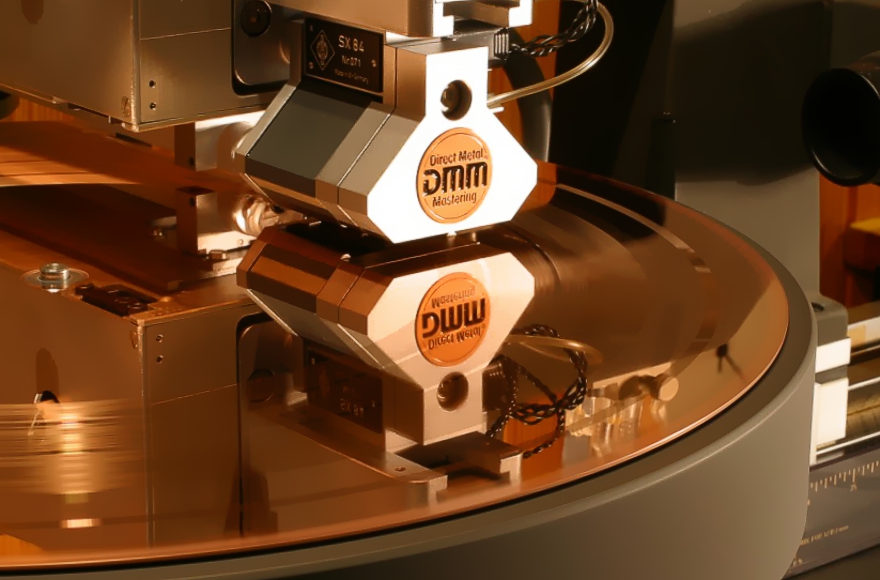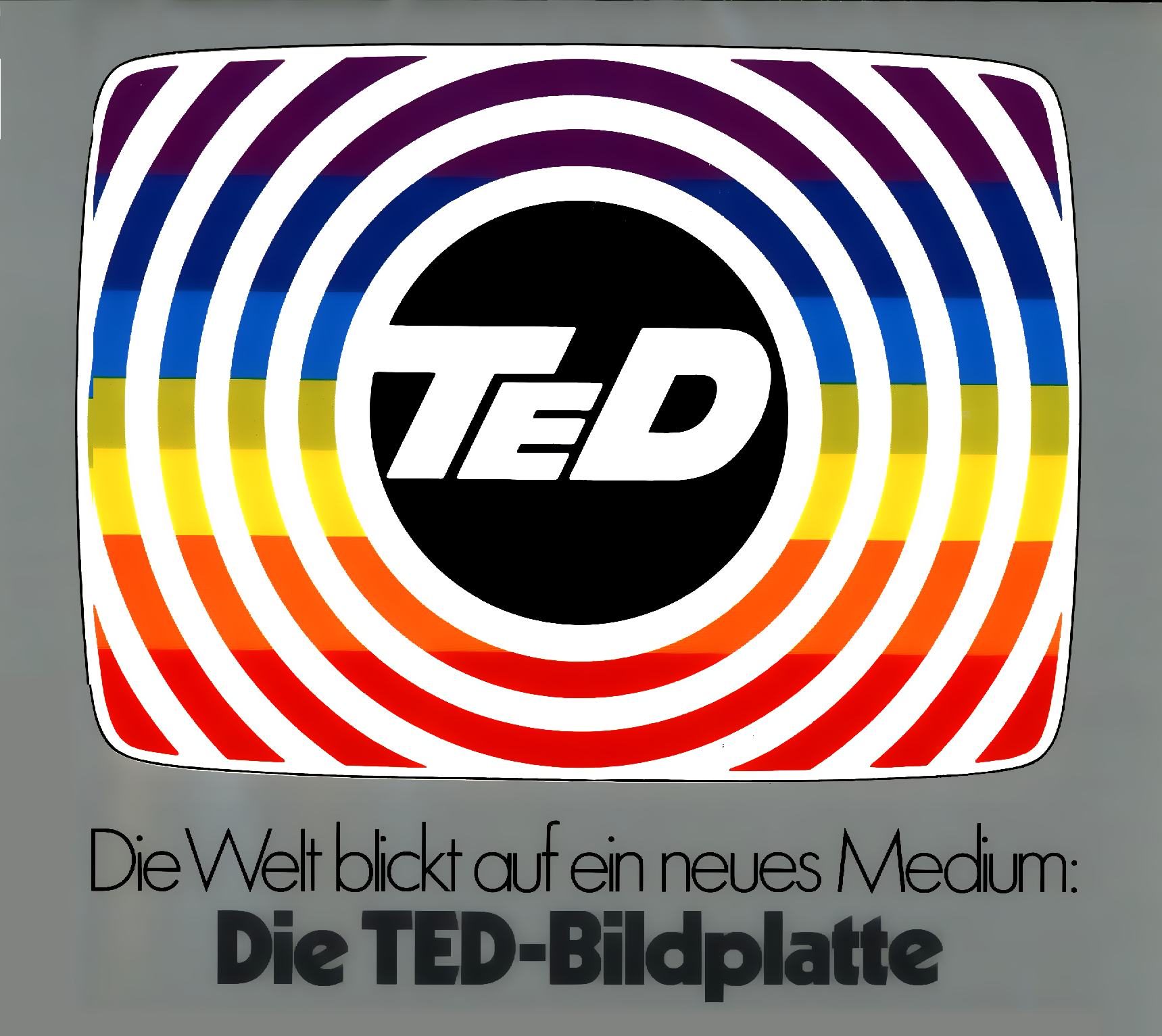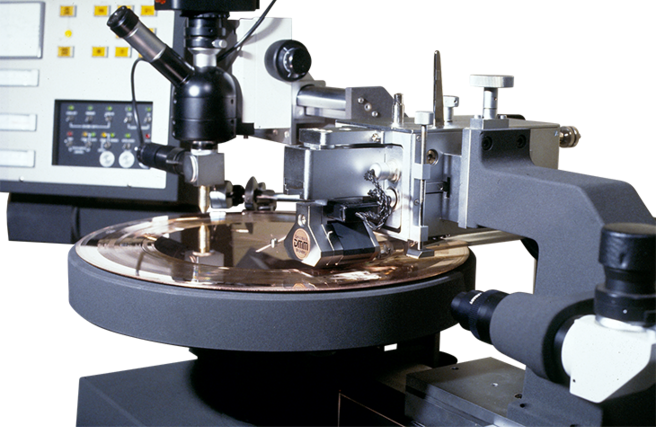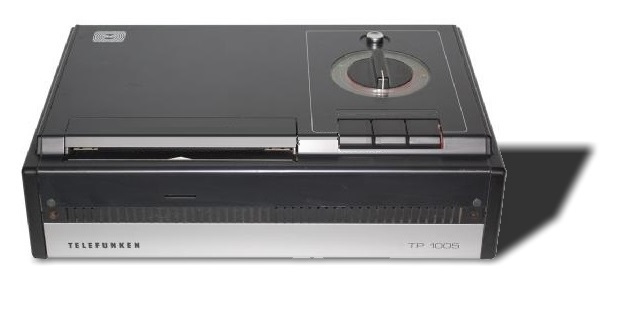
Direct Metal Mastering

Direct Metal Mastering (DMM) is a record mastering technique which arose in the last days of the record as a mass entertainment medium, in anticipation that blank lacquers would become unavailable.
Blanks were made by very few factories and the predicition was that, when demand fell low enough, they would become unprofitable and cease manufacture.
DMM was the last joint development by the thirty-year partnership of TELDEC and Neumann who had brought so much to the development of high quality records. As with previous TELDEC/Neumann ventures, Neumann manufactured DMM technology under licence.
DMM sidestepped the anticipated supply issues with blank lacquers by recording directly onto a stainless steel disc with a thin covering of copper. These metal masters did not require specialist manufacture and could be made as a sideline by any good galvanic factory.³ Just as nitro-cellulose lacquer had replaced wax as the medium inscribed by the recording stylus. In DMM, the stylus cut directly into the copper layer.
Father TeD

Metal mastering had been discovered in the development of the record as a medium for television pictures - a widely pursued goal at the time and one which had its roots in the earliest days of electrical disc recording (see panel).
It had been known for many years that record lacquers "relax" so that high-frequencies dull if the lacquer is not processed quickly in the factory.
During the development of their Television Electronic Disc (TeD), TELDEC and Telefunken had discovered that much greater bandwidth required for video signals disqualified lacquer as a mastering medium for video discs. Harder, copper masters did not display the same tendency to self-erase high-frequencies. When the TeD product failed in the marketplace, DMM applied the metal mastering techniques of TeD retroactively to audio records.
The advantage of DMM for audio records is the simplification it affords in manufacturing. The cut copper master may be nickel-coated and become the manufacturing mother from which the stampers can be made directly. This cuts out the lacquer silvering and two stages of electroforming in the factory and their potential to add noise and pre-echo.6
DMM in audio mastering, like any new technique, ushered in a few problems, some of which were only resolved at the very end of the vinyl era. This accounts for the rather mixed opinions concerning DMM records.
Amongst the teething problems was a modulation dependent drag due to the increased friction of the stylus cutting into metal. This caused speed variations due to the insufficient torque of the old, Lyrec drive motors which needed to be replaced by more powerful DC motors made by Technics.³
Deprived of the springback effects of lacquer masters, DMM records were physically recorded with a 0° vertical modulation angle (VMA) and were thus badly matched to playback styli with a 15° to 20° VTA. Neumann resolved these with the introduction of the SX84 cutter-head and associated electronics.
Did they squeak?
Microscopic evaluation of DMM records reveals that the audio modulation at the time of cutting was accompanied by supersonic signal at 60kHz — rather like a CD-4 disc. You will see different opinions regarding the reason for this high-frequency "cutter-bias" signal. Some authors say this signal was deliberately superimposed on the audio signal to aid the cutting of DMM masters.4 Others say³ this is a myth and that, ❝
....the phenomenon was a form of frictional squeaking that was just a side effect without any purpose.❞

Both are true. The TELDEC patent for DMM5 is clear that the high-frequency (HF) signal is indeed an aid with cutting by reducing the drag on the diamond cutter stylus. Moreover, to be most effective the level of the HF signal should vary according to groove depth: slight in a shallow groove and greater in a deep one.
The signal may be generated and controlled electrically and added to the audio signal prior to the cutter. Or it may be generated by the physical oscillation of the mass and compliance of the stylus driven by the energy due to the friction with the copper blank - in other words, a ❝frictional squeak...❞
Neumann chose the latter solution for their DMM (and last) lathe, the VMS 82 (above). Craftily, the mechanical generation of the "squeak" has the natural virtue of changing according to groove depth in the required way; deep grooves generating more squeak than shallow ones.
The end of an era
Had the anticipated demise of the blank lacquer turned out to be well founded, DMM would have become the default way to make phonograph records. But, in the event, it wasn't just blank lacquers that went extinct .... records went with them. Neumann only made a few DMM equipped lathes and they were the last lathes they ever made.
Of the remaining VMS 82 DMM lathes, most were converted back to normal lacquer operation. Today, only a handful of studios are still able to offer metal mastering.

 The image loop (right - once again reconstructed by Don McLean)² is from audio-bandwidth disc recordings made of BBC off-air transmissions of the 30-line Baird system.
The image loop (right - once again reconstructed by Don McLean)² is from audio-bandwidth disc recordings made of BBC off-air transmissions of the 30-line Baird system.

